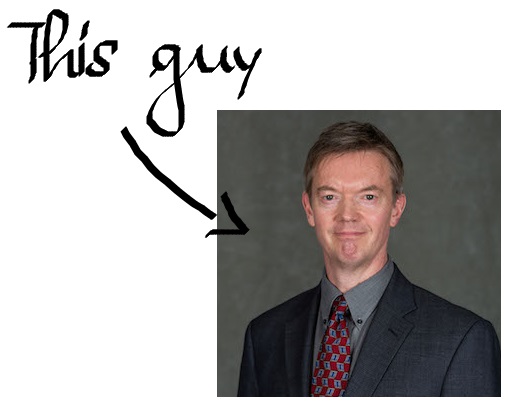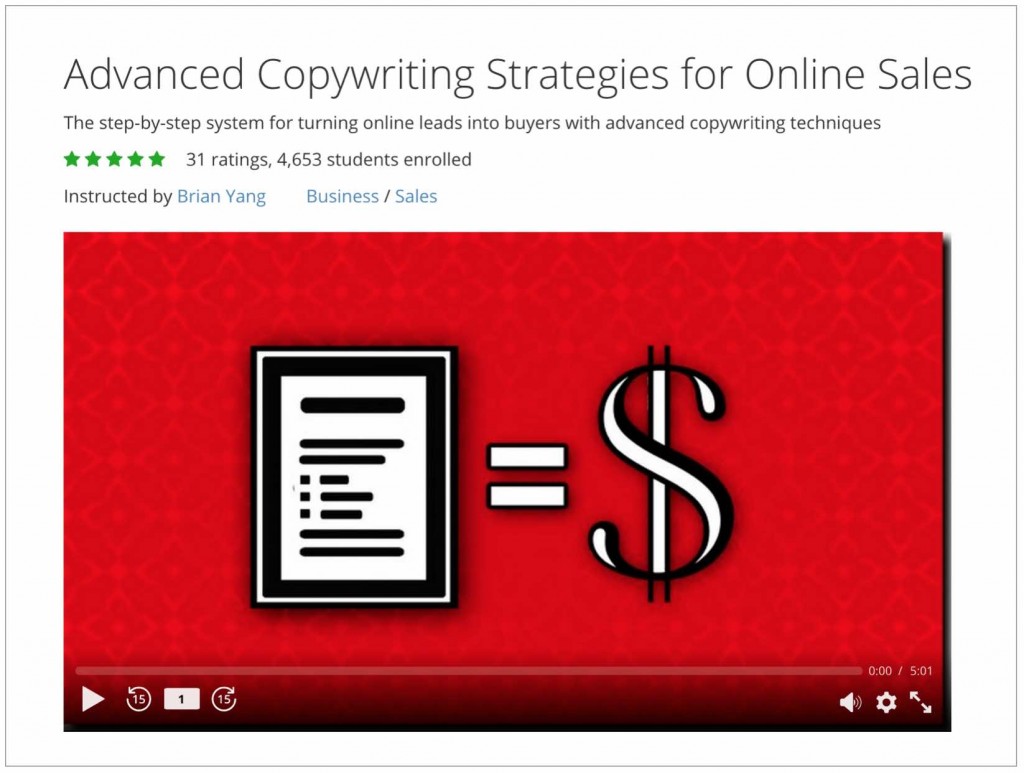
By
Last updated:
April 7, 2023
Have you been to Times Square in New York City?
That place is one giant advertisement.
Did you watch the Olympics this past summer?
If you did, there’s no doubt that you saw the multi-million dollar advertisements that the world’s top brands put out there for the world to see.
Were there any advertisements that made you go “wow”?
Was it Coca-Cola’s #ThatsGold? Or was it Honda’s “The Power of Ridgeline,” or maybe Samsung’s “The Anthem”?
Seeing amazing advertisements like these might inspire you to learn more about advertising or the language of advertising. After all, it’s clear that they’re important for businesses.
If you’re in the business world, then you need to know something about advertising.
I’m going to start you off today with the top 19 English terms used in the field of advertising. Each word will come with examples from actual news stories. I suggest you click on the links to read the full articles and see how the vocabulary is used in different contexts.
When you reach the end of this article, I’ll have three more advertising news stories for you to read in your free time. How about that?
Let’s start learning!
Download:
This blog post is available as a convenient and portable PDF that you
can take anywhere.
Click here to get a copy. (Download)
Business English: 19 Advertising Terms You Ought to Know
In Business English, there are many words that are unique to the field of advertising, just as there are words that have special meanings and usages in the fields of finance, sales and international trade.
While there are many ways to use the words in the list below, we’ll only be discussing those meanings and usages that are unique to the context of advertising.
1. Advertisement
The noun advertisement comes from the verb to advertise.
To advertise is to make the public aware of a product or service that you’re selling. So then, an advertisement is a pubic announcement of those products and services through newspapers, TV, the Internet, etc. You may also refer to an advertisement as an ad in American English, or an advert in British English.
The word advertising may be used in three ways: (1) as an adjective if it comes before a noun (for example, “advertising campaign”), (2) as a noun if it comes after an adjective (for example, “online advertising”) and (3) as a verb (for example, “we are advertising our product on television”).
2. Advertising campaign
An advertising campaign is a series of advertising activities designed to achieve a certain set of results. Verbs you will frequently see used to talk about advertising campaigns are launch (which means “start”) and run.
Sample sentence: KFC has just launched a new advertising campaign featuring Rob Riggle as Colonel Sanders across all advertising channels including digital and social media.
3. Advertising channel
An advertising channel is simply a means of communicating an advertisement to the public. What the channel is tells you how the advertisement is reaching people.
The next seven terms (#4 through #10) are all examples of popular advertising channels.
4. Print advertising
This is sometimes known as hard copy advertising, and refers to advertisements such as those in newspapers, magazines, flyers, etc.
5. Outdoor advertising
This refers to the advertisements placed outside in busy public areas such as roadside signs, billboards along highways and poster advertisements at bus stops and train stations.
6. Direct mail advertising
This involves mailing print advertisements (usually flyers and coupons) directly to peoples’ homes.
The next time you check your mailbox, be sure to look for flyers and newsletters containing promotions and advertisements from your local stores.
7. Digital advertising
This refers to advertisements placed on the Internet. I’m sure you’ve seen these types of advertisements quite often on your computers, tablets and mobile devices.
Digital advertising is also known by different names such as Internet advertising, online advertising and web advertising.
8. Native advertising
This is currently a hot trend in online advertising. It’s an advertisement that blends (combines) naturally with the rest of the text on a website or online page. The idea here is to create an advertisement that doesn’t look like an advertisement.
9. Radio/television advertising
Can you guess where you can find these? I’m sure you can.
10. Commercials
The advertisements that are run on radio and television are called commercials.
11. Word-of-mouth advertising
This is when you tell your friends about a product or service that you’ve used and really like.
12. Advertising budget
An advertising budget is the amount of money you plan to spend on advertising.
Sample sentence: Jet.com will be spending 90% of its $5 million a week advertising budget on digital, TV, outdoor and direct mail advertising.
13. Brand
What brand of sports shoes do you wear? Nike, Reebok, Adidas are all popular brands in sportswear (athletic clothing).
A brand is simply the name you give to your product to make it stand out from those of your competitors.
14. Brand image
In very simple terms, an image is a picture. So then, a brand image would be the idea or picture that comes to mind when you think of a particular brand.
Do you believe their product works like it’s supposed to? Do you trust its quality? Do you look forward to their innovative designs?
Sample sentence: When Cadillac continued to see a drop in their sales, they started making changes to their brand image which included unveiling their “Dare Greatly” commercial on Oscar Night 2015.
15. Brand awareness
Being aware is to know that something exists. You probably know this already. So creating brand awareness would mean making people aware of the existence of your brand.
Sample sentence: Businesses use many different kinds of advertising techniques to create and build brand awareness in their products.
16. Brand ambassador
What’s the job of the ambassador of your country? If you said, to represent your country in another country, you would be right. So then, a brand ambassador would be a person who is hired to represent your brand and create brand awareness of your products.
Sample sentence: According to Entrepreneur.com, having a good brand ambassador is a powerful way to increase product and brand awareness for your company.
17. Endorsement
The noun endorsement comes from the verb to endorse. To endorse is to publicly recommend a product or service. So then, an endorsement is a public recommendation by a celebrity or famous person who is paid to endorse your products.
Sample sentence: According to Social Media Week, the most effective celebrity endorsements are by those who actually use and like the product or service that they’re promoting.
18. Target audience
To target is to aim at. So a target audience refers to the group of people that an advertisement is intended for. These are the people you aim to attract into buying your products. Target audience is sometimes referred to as target market.
19. Product placement
This is another popular form of advertising. Product placement is when you pay for your product or service to be featured in (shown on) movies and television programs.
And there we have it, the top advertising vocabulary that’s commonly used in this field. Here are 3 more news stories for you in addition to the ones I’ve highlighted in the sample sentences above.
How to Practice Your Business English Advertising Vocabulary
The world of advertising is both exciting and ever-changing. So what’s new and happening today? Here are some current news stories for you. Be sure you read the full articles and note the usages of the vocabulary we’ve discussed earlier.
Chipotle’s “A Love Story”
Chipotle is a popular Mexican fast food chain in the US. Have you heard about Chipotle’s new advertisement?
They’ve recently put out a short, animated advertisement entitled (named) “A Love Story.” But what’s the real story behind this advertisement campaign? Read all about it and be sure to watch the video.
Facebook’s Digital Coupon Drawer
Facebook is making it easier for advertisers to reach its site users and for users to keep their advertising offers. How does this digital coupon drawer work?
Google to Stop Using Nexus Branding
Google has decided to stop using the “Nexus” branding that it’s been using on smartphones built with third-party manufacturers. It’s not clear yet what the new brand name will be.
Could it have something to do with the small “G” logo on the back of their new smartphones?
You can keep up with more current news stories about advertising with a subscription to Entrepreneur and other business magazines. If you live in the U.S., Magazine Line is a perfect place to buy these subscriptions at discounted prices. If you’re a student, you may even be able to get further discounts.
Remember, these articles are just a start.
I’ve enjoyed reading them and I hope you will too.
For more, try subscribing to a business magazine or subscribing to The New York Times and following their business section daily. There are many more articles that you can read to improve your advertising vocabulary.
So, start reading and keep learning!
Download:
This blog post is available as a convenient and portable PDF that you
can take anywhere.
Click here to get a copy. (Download)
Table of Contents
- ⬤ What is advertising vocabulary in business English?
- ⬤ How to learn advertising vocabulary in business English?
- ⬤ Word list of advertising vocabulary in business English
- ⬤ Memory cards exercise about advertising vocabulary
- ⬤ Vocabulary test about advertising vocabulary
- ⬤ Writing test about advertising vocabulary
- ⬤ Memory cards to test your knowledge about advertising vocabulary
⬤ What is advertising vocabulary in business English?
Advertising vocabulary is the vocabulary about the activities of generating advertisements for commercial products or services. In this way companies can promote a product or a service. Advertising is a way of communication to motivate potential buyers to buy commercial products or services. It is a way of persuading people to buy something.
⬤ How to learn advertising vocabulary in business English?
You can learn advertising vocabulary with definitions, phrases and expressions easily here for free. We also provide you with many vocabulary games, memory cards, tests, puzzles and exercises. First, please study the word list of advertising vocabulary below.
Your device does not support HTML5. Sorry.
⬤ Word list of advertising vocabulary in business English
- ad: advertisement
- advertisement: a notice or announcement in a public medium promoting or publicizing something
- advertising agency: a company that helps with planning advertisements.
- AIDA: Attention, Interest, Desire, Action
- advertising agency: a firm that creates ads for other companies
- advertising budget: the amount of money that a company spend on advertising
- eye-catcher: attracting attention of a person
- promote: advertising and publicity to increase sales
- benefit: advantage, profit, gain
- billboard: a large outdoor board for displaying advertisements
- broadsheet: a large piece of paper with information on it
- campaign: plan of action
- generic advertising: Advertising for a entire sector
- circulation: amount of copies of newspapers/magazines sold over a period of time
- classified ads: Small advertisement that are divided into categories for newspapers or magazines
- commercial: Advertisement on radio or television.
- brand awareness: knowing a particular brand
- brand loyalty: continuing to buy from the same brand
- coupon: Part of a printed advertisement to be used to order goods or samples.
- direct mail: Advertisement sent by post to customers.
- editing: Reviewing or rewriting advertisement for publication
- mass media: leading means of communication
- keywords: a word or concept to indicate the content
- launch: begin an action to introduce something
- mailshot: posting advertising material to possible customers
- target: objective, goal
- features: particular characteristics of a product
- commercial break: the short period when ads are shown on TV
- commercial channel: TV channels of advertisement
- hoarding: billboard
- hype: excessive or intensive publicity or promotion
- jingle: Catchy verse, slogan or tune
- poster: big sheet of paper used for advertising
- prime time: the time that most audience is expected
- roadside signs: big panels used for outdoor advertising
- slot: particular time in a broadcasting schedule
- soundbite: Short extract from a recorded interview
- tabloid: half-size newspaper with many headlines and photos
- U.S.P.: Unique Selling Proposition
- press release: something written to share and publish
- sales page: a page particularly used to promote a product or service
- social media: websites or apps that allow users to create and share content
- spam email: unwanted, promotional email
- word of mouth: recommendations made by individuals
- publicity: notice or attention given by the media
- brand awareness: being familiar with the distinctive qualities or image of a brand
- target audience: the group that the campaign is for
- misprint : print incorrectly
- call to action: encouraging someone to take a particular action
- celebrity endorsement: having a well-known person to promote a product
- to go viral: to become extremely popular on Internet
- junk mail: unwanted promotional emails and letters
- to launch a product: introducing a new product
- mailing list: a list of contacts used to send information and advertisements
- niche product: a product that is targeted at a specific group of people
- to place an advert: to put an advertisement somewhere
⬤ Memory cards exercise about advertising vocabulary
Read the definition on the memory card below and then guess the meaning of it. To check your answer click on the card to see the answer.
SIMILAR PAGES:
❯❯ Top 140 Business English vocabulary
❯❯ Sales and Marketing vocabulary for business English
❯❯ Money, Finance and Banking vocabulary for business English
❯❯ Project Management vocabulary for business English
❯❯ International Trade (Import-Export) vocabulary for business English
❯❯ Human Resources vocabulary for business English
❯❯ Investment Vocabulary for business English
⬤ Vocabulary test about advertising vocabulary
The following is a vocabulary test about advertising. In this vocabulary exercise read the definition and select the corresponding option from the list. Every correct answer will add 10 points to your score.
⬤ Writing test about advertising vocabulary
Below is an online vocabulary writing test about advertising. Read the definition of the word. Then type the word or phrase into the input box.
⬤ Memory cards to test your knowledge about advertising vocabulary
This is a memory cards exercise to check your knowledge about advertising vocabulary. Firstly, click on a card to flip it and then guess the meaning of it.
External resource links:
You can jump to business English category page to find extra activities and games in this website by clicking here. However, there are some external links that may help you. You can click here to read about business English or here to listen podcasts about business English. You can also see some nice videos on Youtube here.
Today, you’re going to learn 190 proven advertising words.
Inside this article, you’ll get:
– A giant list of words and phrases to write irresistible sales copy (and outshine your competitors along the way).
– A simple, 3-step process that’ll help you get the most out of these marketing words, along with a lot of real-world examples.
Let’s jump right in…
190 Advertising Words and Phrases
This article is for:
✅ People who need words of persuasion to feed their brain when writing copy
✅ Biz owners willing to know how to craft effective advertising copy that actually sells
✅ You, because you want to connect better with people, get them to act and stop writing like a lame robot
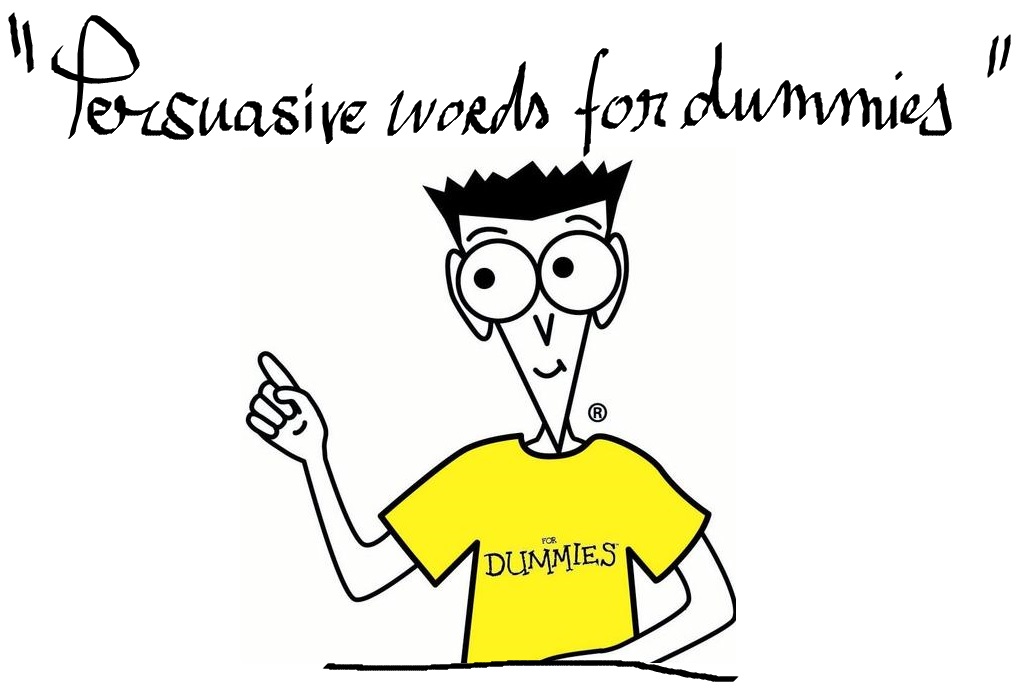
1. Headlines + sub-headlines
2. Product names and introductions
3. Pop-ups
4. Landing pages
5. About us pages
6. Email subject lines
7. Calls-to-action
8. Sales letters to advertise your business
First things first…
I’ve broken down the article below in 3 parts. Make sure you read them all to get the most out of it (having the marketing words won’t help if you don’t know how to use them).
Step 1: Determine the Action You Want Your Readers to Take
Don’t skip on this:
Great copywriting is about crafting content that causes readers to take a specific action.”
So what do you want your prospects to do with the piece of content you’re writing?
Here are various examples:
– Subscribe to your email list
– Contact you for more details
– Order your crispy nachos box right now
“Uh, Clemence, but what happens if I don’t want them to take any specific action right now”.
In this case, you’ll at least want them to feel something, right?
Like, “Oh this company looks awesome. THESE are the guys I want to work with!”. Or: “Uhhh, I feel so overwhelmed, I don’t know where to get started to earn money online…”
That’s where you move on to step 2.
Step 2: Identify the Exact Emotional State That Will Drive That Action
This second step is about defining the emotions tied to the action we want people to take.
See…
The way we’re going to be classifying emotions today is rooted in our psychology buddy named W. Gerrod Parrott (WGP) who came up with the emotion groups’ tree structure.
What W. Gerrod Parrott’s basically tells us is that they are 6 primary emotions that are tied to several secondary emotions. Long story short, these emotions are:
Love
Joy
Surprise
Anger
Sadness
Fear
Today, we’re going to be focusing on:
Love…AKA words that make people feel happy, alive (e.g. health/food related products)
Joy… in two ways:
Trigger words that inspire and empower (great for calls-to-action)
Trigger words that make people feel safe + trust you (e.g. introducing products / services in a benefit-oriented way)
Sadness...words that get them confused or overwhelmed (good to get them realize they’re missing out)
Surprise (curiosity)…AKA words that irresistibly get them to wanna learn more + take action
Before jumping head first into our bad-ass list, lemme’ splain quickly these emotions on the basis of W.G. Parrott’s work…
Primary emotion: Love
Secondary emotion: Affection, desire, cheerfulness
Example: Wicked good lobster rolls.
Primary emotion: Joy
Secondary emotion: Pride, optimism, relief
Example: Build landing pages without I.T. Unbounce
Primary emotion: Sadness
Secondary emotion: Suffering, disappointment, shame
Example: Aren’t you tired of using outdated SEO tactics that’ll never get you in the front page of Google?
Primary emotion: Surprise
Secondary emotion: Irritability, curiosity, exasperation
Example: The top 5 deadly mistakes that are killing you business.
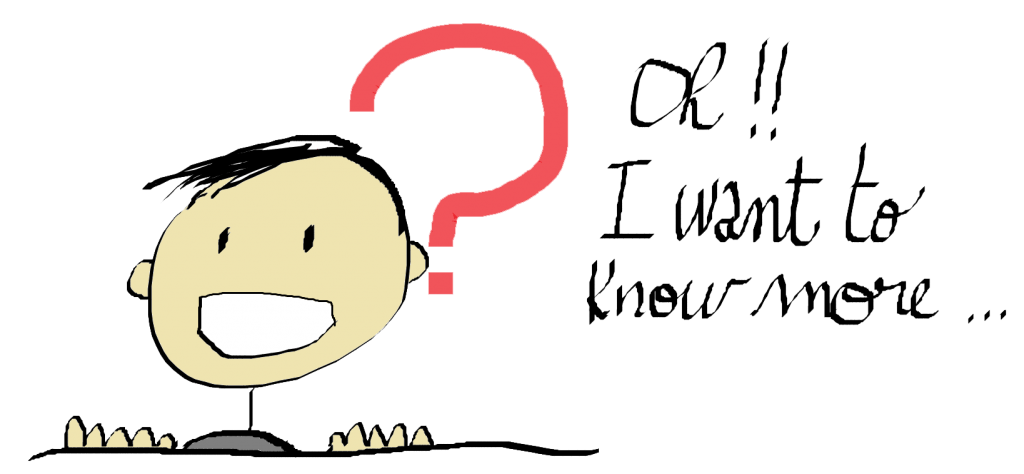
Now, here are your two action items:
1) Think: “How do I want my audience to feel?”
2) List the primary + secondary emotion(s) that pop in your mind. It could be various emotions at the same time.
Step 3: Powder Your Content With the Most Relevant Advertising Words From Our Giant List Below
Our 190-items-long list of persuasive words is broken down as below:
Joyful –> if you want trigger words that make people feel happy, alive (e.g. for health/food related products)
Inspired, empowered –> great for calls-to-action and geting people to act
Safe, trusting you –> good to introduce products / services in a benefit-oriented way
Angry, overwhelmed –> words that get them confused (to get them realize they’re missing out + set you apart from the competition)
Curious –> AKA words that irresistibly get them to wanna learn more + take action
It’s simple:
Just click on the section that is tied to the emotional state you want to evoke.
JoyfulInspired, empoweredSafe, trusting youAngry, overwhelmedCurious
- Amazing
- Awesome
- Bright
- Creative
- Courageous
- Delighted
- Eager
- Ecstatic
- Excited
- Exciting
- Exquisitely
- Fascinating
- Glorious
- Great
- Helpful
- Liberated
- Marvelous
- Passionate
- Remarkable
- Satisfied
- Thankful
- Thrilled
- Unique
- Vibrant
- Are you ready to…
- Awe-inspiring
- Become
- Believe in you
- Challenge
- Conquer
- Dominate
- Finally
- Fulfill
- Get
- Master
- Power
- Scale up
- Tackle
- Take action now
- Transform
- Unlock
- Up to you
- What you would do if
- What would change if
- Winning
- A helping hand
- All-in-one
- Always
- Authentic
- Automated
- Award-winning
- Backed
- Basic
- Best-selling
- Cancel anytime
- Certified
- Cheat sheet
- Easy
- Easy-to-use
- Effortless
- Ethical
- Experienced
- Expert
- Free
- Freedom
- Guarantee
- Guilt-free
- Hassle-free
- Honest
- In good company
- Instant
- Lifetime
- On-demand
- Money-back
- No obligation / catch / questions asked / risk / strings attached
- Protected
- Proven
- Ready-to-use
- Refund
- Results
- Right for you
- Science
- Secure
- Solid
- Succeed
- Step-by-step
- Stupid-simple
- This works
- Tested
- Try (before you buy)
- Tweak
- Unbeatable
- Verify
- Word-class
- Word-for-word
- Are you struggling
- Annoying
- Ashamed
- Bullshit
- Do you feel stuck with
- Desperate
- Delusional
- Dreadful
- Doubts
- Exposed
- Fooled
- Frustrated
- Haunting
- Holding you back
- Get stuck
- Lies
- Mental barriers
- No excuse
- Over-whelmed
- Pass you buy
- Powerless
- Roadblocks
- Scandal
- Shameful
- Sleazy
- The lies of…
- The tragedy of…
- They say…
- Upset
- You know that feeling when
- You’ve been told
- Access
- Are you ready to
- Backdoor
- Behind-the-scenes
- Breakthrough
- Brutal truth
- Confessions
- Confidential
- Controversial
- Discover
- Don’t miss
- Exclusive
- Explore
- Find out
- Have you ever wondered
- Have you heard
- Here’s how to find out more
- Hidden
- I have some bad news
- Insider
- Learn how
- Little known
- Off-the record
- Never-before-reveled
- Reveled
- Revolutionary
- Private
- Secret
- Sneak peak
- No one talks about
- What no one tells you
- What ___ wont’ tell you
Tweet this giant list of advertising words !
–
Here are a few additional proven, catchy words for advertising.
The 12 most persuasive words everPotent headline starters
- You
- Money
- Save
- New
- Results
- Health
- Easy
- Safety
- Love
- Discovery
- Proven
- Guarantee
Source
- Amazing (“Amazing new app that tracks all your calories”)
- Anouncing (“Announcing the hottest list of persuasive words and phrases that work”)
- At last (“At last, a bakery that uses only organic flour”)
- Can you (“Can you be sure your child won’t get kidnapped?”)
- Free (“Free report shows you how to take your site to the first page of Google in 30 days”)
- Here’s (“Here’s how you can save hundreds on grocery shopping”)
- How (“How to get a ripped body in 90 days or less, guaranteed”)
- If you (“If you hate spending time cleaning your house, what’s following brings good news!)
- Introducing (“Introducing New York’s only lobster roll that will make you kill for more”)
- Just released (“Just released: Psychologist’s study reveals little-known secrets…”)
- New (“Powerful new webinar teaches you how to create a passive income stream in 60 days”)
- Now (“Now you can have the body you’ve always wanted”)
- Look! (“Look! Now you can buy pop corn machines at the wholesale price”)
- Presenting (“Presenting the easiest way to learn Excel”)
- Starting today (“Starting today you can dance better than 98% of people”)
- This (“This new invention stops any attacker in his tracks”)
Source: D.E. Whiteman. “Psychologically Potent Headline Starters”, 98. Cashvertising.
The way you write has a huge effect on what you get (or don’t).
I can teach you proven strategies, word-for-word scripts, and hacks that’ll help you sell your products like hotcakes . No B.S., ever.
Subscribe to PPTPOP here
BONUS: Real-World Examples to Inspire You
Because we often need inspiration when writing sales copy, here are several real-world examples + which emotions they relate to so you can get your juices flowing.

Confidence –> from the master, in easy stages
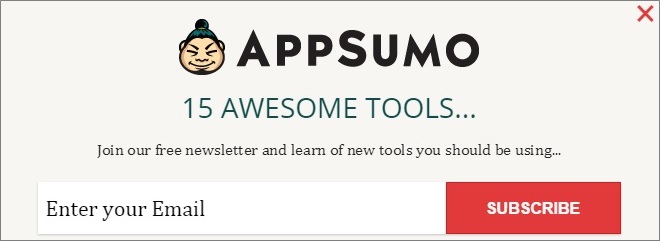
Joy –> Awesome
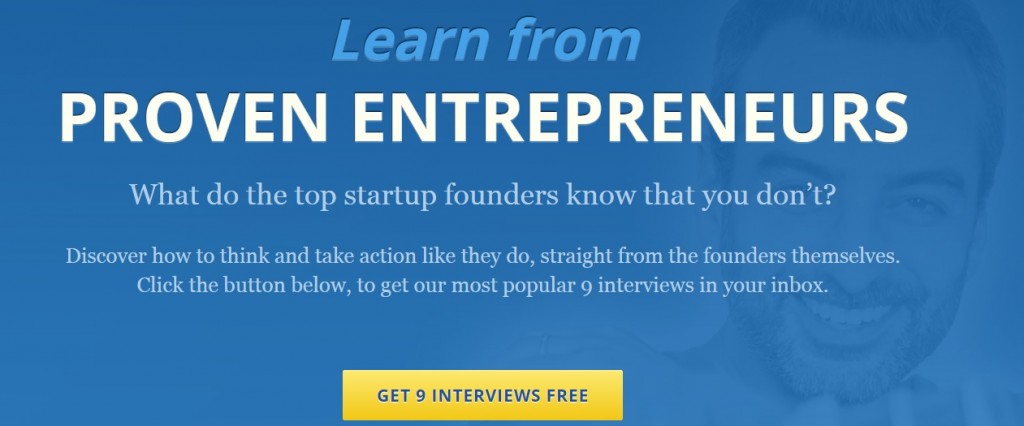
Curiosity –> What do __ know that you don’t. Discover.

the life you’ve always wanted

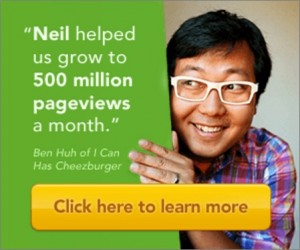
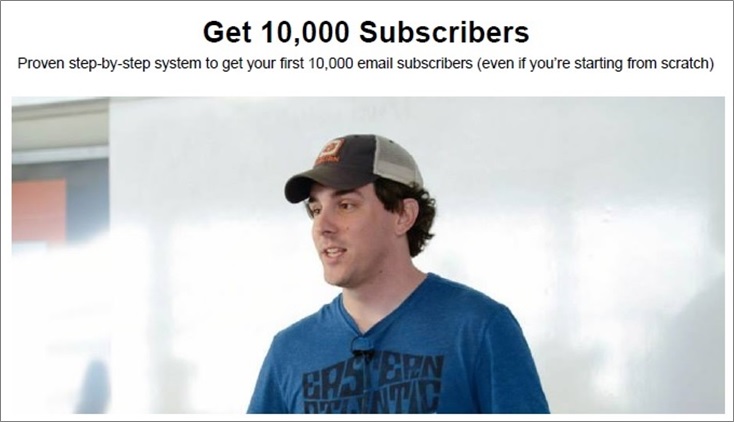
Confidence –> proven, step-by-step, even if
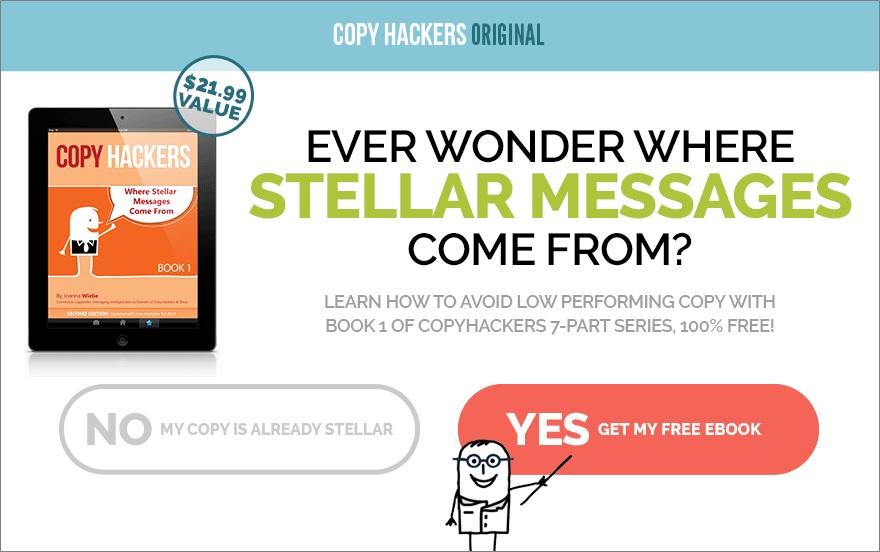
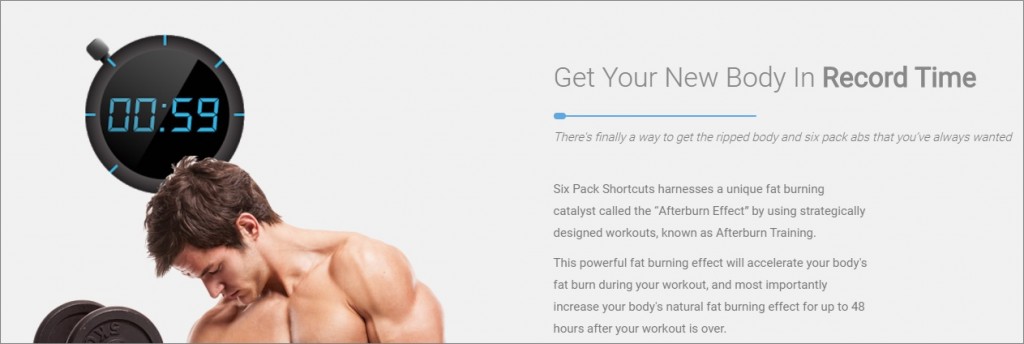
Curiosity –> There’s finally a way
Inspire –> you’ve always wanted
Headline starter –> Introducing
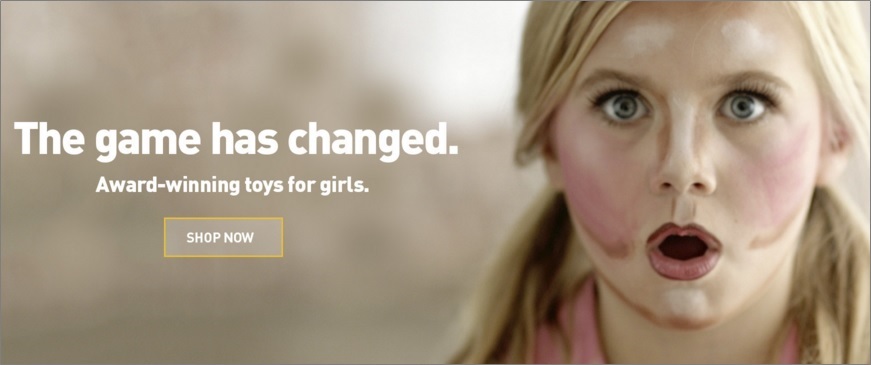
Additional Resources
👉 PPTPOP’s best resources. Learn how to gain a competitive advantage over others. Fast.
👉 Clark Elliott, Emotion categories (summarized) + The Deep Lexical Semantics of Emotions (highly detailed).
👉 D.E. Whiteman, Cashvertising. Wow… this, my friend, is classic book that breaks down proven, actionable principles of advertising psychology so you too can persuade and sell more. What I love about it: D.E. Whiteman goes through the proven triggers that cause people’s brains to buy in a fun and easy-to-read way. You’ll learn how to write kickass sales copy + 100 psychology secrets and how to use them for your business.
Want to Accelerate Your Learning and Start Investing in Yourself?
Introducing the Advanced Copywriting Strategies for Online Sales
An exquisitely detailed, take-you-by-the-hand online course on copywriting that’s jam-packed with proven advice, formulas and scripts you can use right now to write copy that sells and turn leads to paying customers.
Imagine forever improving one of the most important skills you can learn in marketing.
Forever being able to write copy that naturally connects with people, gets them excited and sells dramatically better than your competitors.
…all because you invested the cost of a fine dinning meal for two in a step-by-step course designed to teach you how to write so people ACT.
If this sounds good to you, click the image below to check out the Advanced Copywriting Strategies Course. Life-time access, 30-day money back guarantee. Invest in this course today, and forever you’ll have a skill that could change your financial life.
Click here to learn more

Word-of-Mouth Advertising Definition:
An unpaid form of promotion in which satisfied customers tell other people how much they like a business, product or service
Word-of-mouth advertising is important for every business, as
each happy customer can steer dozens of new ones your way. And it’s
one of the most credible forms of advertising because a person puts
their reputation on the line every time they make a recommendation
and that person has nothing to gain but the appreciation of those
who are listening. What are you doing to make sure your potential
ambassadors feel confident enough in your business to recommend it?
What are you doing to trigger word-of-mouth?
Here are some tips to help you generate word-of-mouth:
Word-of-mouth is triggered when a customer experiences
something far beyond what was expected. Slightly exceeding
their expectations just won’t do it. You’ve got to go above and
beyond the call of duty if you want your customers to talk about
you.
Don’t depend on your staff to trigger word-of-mouth by
delivering «exceptional customer experience.» Good customer
service is sporadic, even in the best establishments. The customer
who receives exceptional service today can’t be sure their friends
will receive the same tomorrow, so even the most well-served are
unlikely to put their necks on the line and make a recommendation.
Deep down, customers know service comes from an individual, not
from an establishment. And even the best people have bad days.
Physical, nonverbal statements are the most dependable in
triggering word-of-mouth. These statements can be
architectural, kinetic or generous, but they must go far beyond the
boundaries of what’s normal. If you don’t want to be average, why
do you insist on being normal? Here are some examples of these
statements:
- Architectural. The piano store that looks
like a huge piano, with black and white keys forming the long
awning over the long front porch. The erupting volcano outside the
Mirage in Las Vegas. A glass-bottom floor that allows customers to
see what’s happening on the floor below them. Do you remember when
McDonalds began building attached playgrounds to all their
restaurants? It’s worked like magic for more than 20 years. - Kinetic. The tossing of fresh fish from one
employee to another at Pike Place Market in Seattle. The magical,
twirling knives of the tableside chefs at Benihana. Kissing the
codfish when you get «screeched in» at any pub in Newfoundland. (A
screech is a loud and funny ceremony during which
non-Newfoundlanders down a shot of cheap rum, repeat some phrases
in the local dialect and kiss a codfish. Everyone who visits that
wonderful island returns home with a story of being «screeched
in.») While it may at first seem like a kinetic word-of-mouth
trigger is a violation of #2 above, «Don’t depend on your
staff…,» it’s really not. A kinetic word-of-mouth trigger is
constantly observable by management. It isn’t a «customer service»
experience delivered privately, one on one. - Generous. Are you willing to become known
as the restaurant that allows its guests to select—at no
charge—their choice of desserts from an expensive dessert menu?
You can cover the hard cost of it in the prices of your entrees and
drinks. Flour, butter and sugar are cheap advertising. Are you the
jewelry store that’s willing to become known for replacing watch
batteries at no charge, even when the customer hasn’t purchased
anything and didn’t buy the watch from your store? Word will
spread. And watch batteries cost less than any type of
advertising.
Architectural, kinetic, generous: These are the flour, butter
and sugar of effective word-of-mouth. Will you put these rich
ingredients into the mouths of your potential word-of-mouth
ambassadors?
Budget to deliver the experience that will trigger
word-of-mouth. Sometimes your word-of-mouth budget will be
incremental, so that its cost is tied to your customer count. Other
times it’ll require a capital investment, so that repayment will
have to be withheld from your advertising budget over a period of
years. The greatest danger isn’t in overspending but in under
spending. Under spending on a word-of-mouth trigger is like buying
a ticket that only takes you halfway to Europe.
Don’t promise it in your ads. Although it’s tempting to
promise the thing you’re counting on to trigger word-of-mouth,
these promises will only eliminate the possibility of your
customers becoming your ambassadors. Why would a customer repeat
what you say about yourself in your ads? You must allow your
customers to deliver the good news. Don’t rob your ambassadors of
their moment in the sun.
Chances are you have one of the best products or services, but what’s the use if nobody knows about it and it’s not generating the sales you were aiming for? That’s exactly where advertising comes into play. Whether it’s a creative slogan, catchy jingle, or an innovative bus ad, advertising examples are everywhere; they come in all kinds, shapes, and sizes.
Also, did you know that an average human is exposed to almost 6000-10,000 ads per day?
Nonetheless, with so much competition and noise, how can you create a winning ad campaign for your business?
Fret not; we at Marketingtutor.net have curated a list of some of the top-notch types of advertising campaigns that can take your business to a whole brand new level.
Let’s find out!
What Is Advertising?
Advertising is more like a form of marketing communication, it’s one of the crucial elements of the organization’s marketing strategy. Businesses across the globe use advertising to spread the word about their services and products through several channels.
What’s more, today’s fast-paced tech world has changed the landscape of advertising, with broadcast and print serving as conventional formats, whereas digital format serves as the contemporary option.
Also, with advancements in tech, companies have the ability to gain a new customer base and track the performance of their ad campaigns.
11 Different Types of Advertising
Before you let your imagination fly and think of catchy jingles or clever slogans, you need to consider what kind of ad campaign you would like to run for your business.
By no means are we saying creativity doesn’t matter; IT DOES, but targeting your audience and choosing the right platform is what matters the most in achieving the company’s strategic goals?
Here’s a list of some of the types of advertising with examples that you can choose and pick wisely!
Television Advertising
Are you seeking an extensive reach that can cater to a large market? Television advertising can be the answer to your business needs. That’s because it has the edge of sound, movement, color, and sound to persuade buyers to buy the product.
Albeit it’s costly, if you are looking at the bigger picture, more customer base, extensive reach, it’s completely worth it.
Companies can market their services and products through 20, 40, and 60 seconds television commercials. Nevertheless, the cost of the ad depends on other several factors, including:
- Length of the ad.
- The number of networks.
- Geographic reach.
- Time of the day.
- Frequency of airing
Example – Wendy’s Where is the Beef
It is perhaps one of the most iconic and catchy taglines of the 1980s; Burger King and McDonald’s were ruling the fast-food market because they were promoting the size of their burgers by naming them “Whopper” and “Big Mac.” Wendy had to come up with something more novel and catchy to grab the public’s attention.
Wendy’s clever slogan TV commercial,“Where is the Beef” had a lasting impact on fast food advertising. Never before had a fast-food burger joint gained such cultural clout; even today, people utter the catchphrase when seeking more substance.
Radio Advertising
If your target audience listens to a particular radio station, radio advertising can come in very handy to reach your target market and gain new customers.
The target audience can hear radio ads while running day-to-day errands (doing household chores, driving, etc.), radio also enables the repetition of ads just like TV commercials that, in turn, help organizations get more recognition and customer base.
Example – Sprite Radio Ad
When it comes to an ad that is short, loud, crisp, and sweet, Sprite tops the list. With this ad campaign, the company was able to target its audience without having to say much.
Yes, the slurping sound effect gave all the feel to its audience.
Print Advertising
Print advertising refers to the advertisements that we often see in magazines, flyers, newspapers, etc. Businesses can advertise their services and products in the local newspaper, whether within separate classified sections or either throughout the paper, to reach a target audience within the geographic region.
Example – Ecovia: Stop the Violence
Several companies came forward to create awareness about car accidents. However, none was successful in achieving a massive social media awareness the way Ecovia did with its “Stop the Violence” print ad campaign.
The company preferred using body illustrations to speak to the target audience, trying to convince them, “don’t drink and drive.”
Social Media Advertising
How to keep up with today’s digital-driven world? We are living in a golden era, where social media can either make or break your business. Businesses worldwide use social media ads to promote their services and products.
With social media ads, companies have the ability to target a specific customer base, age group, etc. Also, the companies have two options; they can either pay platforms for displaying their ads or opt for an organic method.
Example – Sephora
It is a multinational beauty retailer famous among women of all age groups.
Since videos are one of the vital components that exhibits a high-engagement rate, so Sephora came up with a stunning video ad campaign to reach its target audience. The campaign performed well than the previous campaigns with 32% higher return and 41% increase in click-through rate.
Paid Search Advertising
It is a type of online advertising that is usually known as PPC (pay-per-click). Businesses that prefer using paid search advertising only pay a fee when people click on their advertisements. They compete for specific keywords, usually connected to their industry, as well as the visibility of their ads on the search engine.
Example – Converse “DOMAINATION”
Converse – a global footwear brand, teamed up with one of the marketing agencies, Anomoly, to create an innovative and novel way to communicate with its teenage audience.
Instead of selling their products directly to the targeted audience, the company employed Google AdWords to connect with the audience by being relevant and encouraging conversations.
Their strategy was to come up with such terms that their potential customers used to search. This way, the global brand was able to fetch the attention of its target audience in a fun and creative way.
Outside Advertising
Outside advertising is also called out-of-home ads because it’s the advertisement that people see outside their homes. For instance, the ads we see on the billboards, transit vehicles, inside subway cars, and on the side of the bus.
Companies usually use outdoor ads to grab the attention of a large population within a geographic location. All in all, businesses prefer using bold images and fewer words so the advertisement can be easily understood.
Example – McDonald’s Clock Billboard
Nothing can beat this fast-food chain, whether it’s about coming up with creative slogans or outdoor ads billboards. Yes, the famous fast-food multinational company stands out with its clock billboard that reminds you they are open 24/7.
Mobile Advertising
Mobile ads have become one of the most important tools for marketing because of the explosion of social media. Also, mobile ads can easily reach the users/target audience via mobile device with internet access, such as a tablet or smartphone.
Users can see the mobile ads through different channels, including web pages, within mobile apps, or social media. For instance, if someone is playing a video game on the mobile, chances are they will encounter ads for similar games in between rounds of playing game.
Example – Snapchat Ad & Filter: Lucky Charms
Lucky Charms wanted to do something out of the box for St. Patrick’s Day. They planned to team up with Snapchat to create an innovative and gamified filter for the promotion of their unicorn-based cereal.
The campaign was so successful that over 12 million Snapchat users used the filter, giving Lucky Charms a tremendous engagement rate on the site and a branding boost.
Direct Mail Advertising
It is a type of print advertising in which adverts are usually mailed to the target audience. Catalogs, flyers, newsletters, and brochures are some examples of direct mail ads.
This strategy allows businesses to identify more targeted demographic than any other type of print ads formats because advertisements are delivered through a direct mailing list.
Example – Nestle Kit Kat Chunky
Who doesn’t like receiving a free chocolate bar voucher in the mail? Well, that’s what Nestle did to promote its product, Kit Kat Chunky.
They encouraged the users to claim their Kit Kat from the local corner shop, with a personalized note, “we are sorry we couldn’t deliver your parcel” card claiming that the product wouldn’t fit in the mailbox owing to its chunkiness.
Thus, the company was able to see the surge in the purchase by customizing each leaflet and exciting people’s taste buds.
Display Advertising
Display advertising is a strategy that promotes a product or service through visuals, i.e., images and videos on web pages, social media platforms, and various display networks.
Display advertising encourages its target audience to click on the ad and redirect to the advertiser’s website to complete the direction action (purchase).
Remarketing and retargeting are a few methods used in display advertising. For example, when a user visits a website, he might accept the browser cookies that grant permission to that site to track his journey.
If the visitor does not make a purchase, the advertiser (brand) may target him on another website by placing ads of products and services to influence his purchase decision.
Product Placement Advertising
In product placement ads, companies have to pay to have their services or products inserted in media content, such as movies or television shows. Although the content doesn’t directly promote the product, it is still accessible to the target audience.
This strategy helps businesses reach an even targeted audience more privately.
Example – Reese’s Pieces in E.T (Extra-Terrestrial)
Reese’s are the chocolate miniatures of the Hershey Company that were featured in one of the most iconic films of 1982, the Extra-Terrestrial (E.T).
Did you know that this product placement ad led to a surge in sales by a whopping 300%?
Public Service Advertising
Public service advertising promotes a cause in the general public’s best interest. It is also known as a public service announcement (PSA) or a community service announcement (CSA). These ads are broadcast on television, radio, and newspapers to reach the masses.
The primary aim of the PSAs is to aware the audience about a specific issue and alter their attitude.
This type of advertising is more often used by government agencies and non-profitable organizations to educate consumers about specific issues, i.e., health and safety.
The Takeaway
Choosing what type of advertising you need to run for your business is indeed an overwhelming endeavor as it can make or break your brand name.
Every advertising campaign has its own perks; you need to determine what you are aiming to achieve, only then will you be on your way to mastering the ad area.




